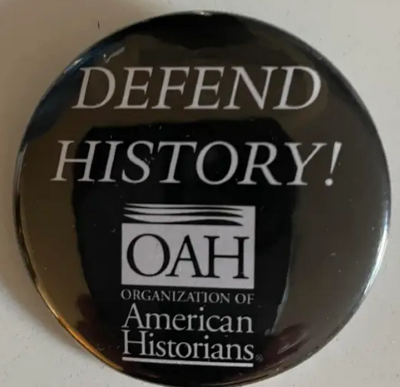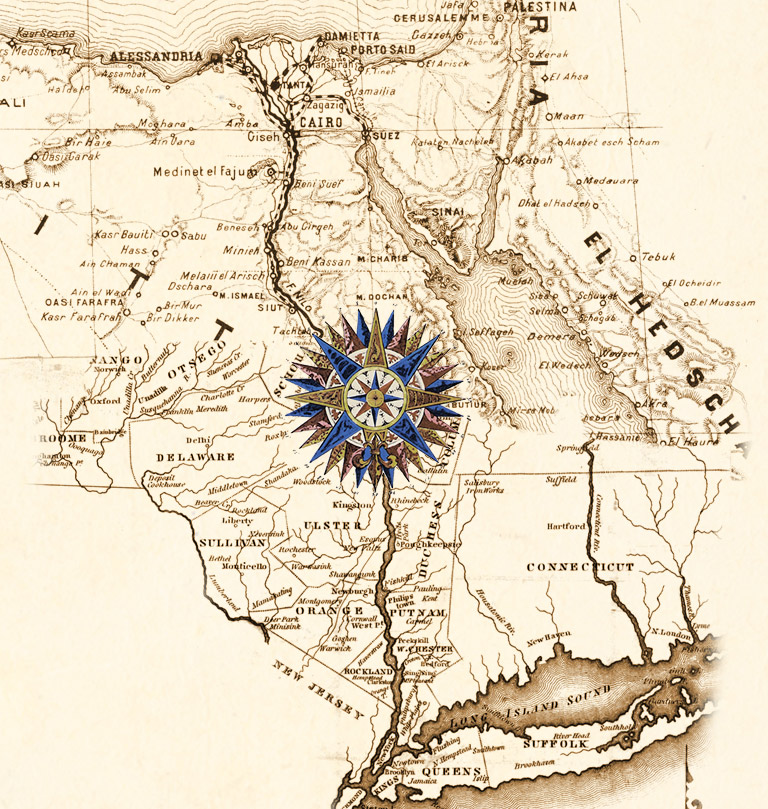
The annual conference January 3-6, 2025, in New York City, of the American Historical Association exposed the two wings of the organization: the Hamas wing and the Hamilton Wing. The exposure occurred Sunday evening, January 5. So far the event has been covered by two articles in The New York Times.
“Historians’ Group Votes to Condemn ‘Scholasticide’ in Gaza” by Jennifer Schuessler (online January 6, print January 8). She reported on the Hamas event. I was sitting by her at the Hamilton one and said I would not blog about it until after her article appeared. She also had written about another history organization, the Society for Historians of the Early Republic (SHEAR), when it had its contretemps that also made the news (SHEAR CHAOS: A Culture Wars Train Wreck for a History Organization, August 19, 2020). Her article, Clash of the Historians Over Andrew Jackson,” (July 27, 2020, print), had appeared a few weeks earlier.
The second article was an op-ed piece by Pamela Paul, “Historians Condemn Israel’s ‘Scholasticide.’ The Question Is Why (online January 8) and “Historians Take a Misguided Stand on Gaza” (print January 10). Last time I looked, it had generated 701 comments, some rather lengthy, before being closed.
HAMAS WING
The impetus for this clash was the proposed resolution:
Resolution to Oppose Scholasticide in Gaza
Whereas the US government has underwritten the Israel Defense Forces (IDF) campaign in Gaza with over $12.5 billion in military aid between October 2023 and June 2024;
Whereas that campaign, beyond causing massive death and injury to Palestinian civilians and the collapse of basic life structures, has effectively obliterated Gaza’s education system;
Whereas in April 2024, UN experts expressed “grave concern over the pattern of attacks on schools, universities, teachers, and students in the Gaza Strip” including “the killing of 261 teachers and 95 university professors . . . which may constitute an intentional effort to comprehensively destroy the Palestinian education system, an action known as scholasticide.”
The bases for this charge include:
- The IDF’s destruction of 80 percent of schools in Gaza, leaving 625,000 children with no educational access;
- The IDF’s destruction of all 12 Gaza university campuses;
- The IDF’s destruction of Gaza’s archives, libraries, cultural centers, museums, and bookstores, including 195 heritage sites, 227 mosques, three churches, and the al-Aqsa University library, which preserved crucial documents and other materials related to the history and culture of Gaza;
- The IDF’s repeated violent displacements of Gaza’s people, leading to the irreplaceable loss of students’ and teachers’ educational and research materials, which will extinguish the future study of Palestinian history;
Whereas the United States government has supplied Israel with the weapons being used to commit this scholasticide;
Therefore, be it resolved that the AHA, which supports the right of all peoples to freely teach and learn about their past, condemns the Israeli violence in Gaza that undermines that right;
Be it further resolved that the AHA calls for a permanent ceasefire to halt the scholasticide documented above;
Finally, be it resolved that the AHA form a committee to assist in rebuilding Gaza’s educational infrastructure.
Paul asked in her opening paragraph:
The history profession has plenty of questions to grapple with right now. Between those on the right who want it to accentuate America’s uniqueness and greatness and those on the left who want it to emphasize America’s failings and blind spots, how should historians tell the nation’s story? What is history’s role in a society with a seriously short attention span? And what can the field do — if anything — to stem the decline in history majors, which, at most recent count, was an abysmal 1.2 percent of American college students?
She then observed:
But the most pressing question at the annual conference of the American Historical Association, which I just attended in New York, had nothing to do with any of this. It wasn’t even about the study or practice of history. Instead, it was about what was called Israel’s scholasticide — defined as the intentional destruction of an education system — in Gaza, and how the A.H.A., which represents historians in academia, K-12 schools, public institutions and museums in the United States, should respond.
The suggestion appears to be that the historians have taken their eyes off the ball as to what should be of primary importance to them (us) as historians.
According to Schuessler, the vote followed months of organizing by supporters of the resolution. According to Paul, there was a rally prior to the business meeting. The meeting itself was jam-packed. It was standing room only with an excess spilling over into the foyer beyond the reach of the sound system. Each of us was given five index cards of different colors for voting. That was in case there were multiple votes. Then we were told to use the white index card only for the vote. Not everyone had cards. Finally we were told we could use anyone of the cards. The person sitting behind me kept saying a person could then submit five cards as they were passed to the aisles.
The debate consisted of five speakers for each side with two minutes. In general, the speakers observed the restriction. As for the civility, it was somewhat lacking particularly against those who were against the resolution. One argument repeatedly made was that the AHA would lose credibility in its advocacy work. The AHA frequently advocates in (Republican) states considering legislative restrictions on the teaching of history. The passage of the resolution would undermine that credibility particularly during the Trump presidency. Here is where the boos and the laughter were at their strongest.
Many of the attendees appeared to be grad students. These are the people in a diminished market and with student loans who would be most in need of federal assistance. Schuessler ended her article by quoting a professor who voted against the resolution as saying after the resolution had passed, “This feeds directly into the idea that academics are unapologetically political and are all on board with a pretty far left-wing view of the Israel-Hamas war….[I]f a resolution” like this goes through at the biggest organization of historians in America, that’s really bad for us.” In other words, by giving the President, Congress, and Republican (and some Democratic) legislatures the finger will be counterproductive when extending the hand for funding.
Paul quotes one of the speakers in opposition to the resolution:
“If this vote succeeds, it will destroy the A.H.A.,” Jeffrey Herf, a professor emeritus of history at the University of Maryland and one of five historians who spoke against the resolution on Sunday, told me. “At that point, public opinion and political actors outside the academy will say that the A.H.A. has become a political organization and they’ll completely lose trust in us. Why should we believe anything they have to say about slavery or the New Deal or anything else?”
She also quotes Executive Director Jim Grossman, an opponent of the resolution in a message to the members:
“The A.H.A. cannot, does not, and should not intervene everywhere… As a membership organization, we keep our distance from issues that are controversial within and among our members. And we keep in mind that our effectiveness rests on our legitimacy, our reputation for even-handedness, professional integrity and appropriately narrow boundaries.”
Here one may observe the disconnect between the institutional position of those who appear before legislators and who speak to Congressional representatives and those who call for the AHA to take a stand on principle assuming they understand the consequences of such actions.
Paul noted:
Enrollment in history classes is in decline and departments are shrinking. The job market for history Ph.Ds is abysmal.
Finally the resolution substantiates and hardens the perception that academia has become fundamentally politicized at precisely the moment Donald Trump, hostile to academia, is entering office and already threatening to crack down on left wing activism in the classroom. Why fan those flames?
One only has to think of the fate to the university presidents at Harvard, MIT, and Penn questioned by then Representative Elise Stefanik on anti-Semitism on their campuses. She is moving on to become the Ambassador to the United Nations while those three university presidents lost their jobs
She noted that the sponsors of the resolution were an affiliate of a group founded in 2003 in opposition to the war in Iraq. Indeed, one of the speakers on behalf on the resolution noted he had been fighting the fight since 2003.
The audience reaction to the speakers made it clear that the resolution would pass. It so in a vote 428 in support, 88 against, and 4 abstained. Paul reported hearing the chant “Free, free Palestine!” after the results were announced.
Let’s put the vote in context to use a favored history approach.
By coincidence and subsequent to the conference there was an article in The New York Times on the changes in the school curriculum being imposed by the new Syrian rulers (Ridding Syrian Classroom of More Than al-Assad, January 8, 2025 print). For example, the Roman-era Queen Zenobia of Palmyra, has been deleted. Syrian Christians and Jews are now singled out as people who have been led astray. Interestingly, Egyptians have no problems with glorifying the pre-Moslem pyramids while Iran sometimes struggles with Cyrus the Great and Persia.
By coincidence and again subsequent to the conference, there was an article in The New York Times about the genocide in Sudan (Sudan Rebels Are Guilty of Genocide, The U.S. Says, January 8, 2025 print). It condemns the systematic murders of black Africans in particular the Masalit ethnic group by Arab Africans. And when people are not directly murdered, aid to them is restricted. More than eleven million people have fled the country making Sudan the largest source of refugees for a single country.
By coincidence and again subsequent to the conference, there was an article in The New York Times about Nicolás Maduro, the incumbent Venezuelan president who successfully stole an election (Maduro, Accused of Stealing Election, Seizes a Third Term, January 11, 2025 print). At his inauguration he promised peace, prosperity, democracy, and equality with the words:
“I swear before history.
In addition, he is stockpiling foreign hostages including Americans as bargaining chips for future negotiations. In the meantime President Biden has extended protections for the nearly 600,000 Venezuelans refugees living in the United States for another 18 months. Maduro biggest export has become the people of his country who have left by the millions.
Finally, by coincidence and again subsequent to the conference, there was an article in The New York Times about China’s efforts to eliminate the Tibetan culture one child at a time (Erasing Tibetans’ Culture, One Child at a Time, January, 12, 2025, front page Sunday print). The article recounts the Chinese actions to assimilate Tibetan children in ways that are very similar to the Boarding schools once common in the United States. These actions are very similar to what Russia is doing today with the children from the Ukrainian lands it has occupied.
Although these articles appear subsequent to the conference, they all refer to longstanding conditions prior to the conference. There was ample opportunity to propose a resolution to condemn these actions as well. Obviously there was none.
The first reaction might be because the intent was to single out Israel. This does not mean that all the supporters on the resolution are anti-Semitic or support the Hamas call of “river to the sea,” the goal it teaches in its schools. But there may be more to it than simply being anti Israel.
There is a longstanding tradition of protest going back to the war in Iraq. Such protests are against the United States. In other words, to condemn Israel also is to condemn the United States, Israel’s closest ally. One can’t help but wonder how many of the supporters of the resolution also embrace the Semiquincentennial celebration. I suspect not many.
HAMILTON WING
By coincidence, the next session after the business meeting was a plenary session “The American Revolution: A New Film Directed by Ken Burns, Sarah Botstein, and David Schmidt, Written by Geoffrey Ward.” This session was directly across the hall from the business meeting (with a break for dinner). The room may be slightly larger but the audience size seemed roughly the same.
The demographics of the meeting were substantially different. It was older and whiter, more traditional as someone said. By coincidence I was sitting by Jennifer Schuessler so we had an opportunity to compare notes about the two meetings. The difference in the audiences in the two sessions was remarkable.
Now the resolution is winding its way through the AHA council for eventual voting by the full 10,000 member organization, more than the 4,000 who attended the conference, and more than the 520 who voted at the business meeting. I expect there may be more articles and blogs when that vote is announced.





